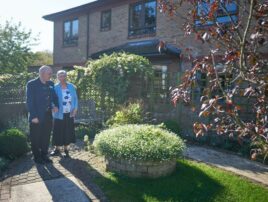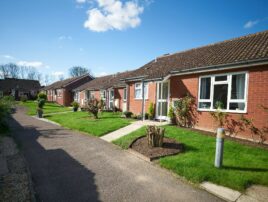
Tuesday 10th September 2024
Beware bungalow legs
Louise Morse
Think twice if you are considering downsizing and moving into a bungalow. You may be effectively shortening your life by developing bungalow legs where, because you are not regularly climbing or descending stairs, they become weaker. Compared with not climbing stairs, stair climbing was associated with a 24 percent reduced risk of dying from any cause and a 39 percent lower likelihood of dying from cardiovascular disease. Stair climbing was also linked with a reduced risk of cardiovascular disease including heart attack, heart failure and stroke. Experts warn that making the move early into a stair-less home hastens the decline associated with old age.
A study of 6,000 older people in Japan, published in the journal BMC Geriatrics, found that having stairs in the home helped hold back age-related physical decline. Stairs challenge your legs in different ways than normal walking. When you go up and down stairs the legs function differently, experts say. Climbing the stairs involves the glutes in the buttocks, hamstrings, calves, as well as ankles that ensure the feet land properly on the step. Having stiff ankle joints is common in older adults who moved to bungalows, proving the saying: "use it or lose it."
While people move into bungalows for different reasons, losing that daily physical exercise can be a key contributor to losing muscle mass (and developing bungalow legs), as well as the decline towards a more sedentary lifestyle.
Dr Lucy Pollock is an NHS Consultant Geriatrician who has worked with older people for 30 years. Her first book, ‘The Book About Getting Older’ looked at the choices people have in their later years. Her new book, ‘The Golden Rule’, looks at ageing with confidence and gives ‘lessons for living.’ She says that her mother resisted the stairlift to the end of her days, and the stairs became a real test for her. ‘She had to do them very, very slowly. And only once a day. But she did them every day. And that was even when she was very near the end of her life.’
She adds, ‘If you do move into a bungalow while you’re still able to do stairs, try and find some other way to maintain that muscle strength. It’s part of a wider problem of not taking the stairs when the opportunity arises. You see lots of people now pop into a lift to go two or three flights of stairs. You think, ‘For goodness sake, don’t do that!’’
Other research led by Sophie Paddock, MD, of the University of East Anglia and Norfolk and Norwich University Hospital Foundation Trust, found that climbing stairs is associated with improved heart health and longevity. As well as strengthening and toning your leg muscles, it keeps leg arteries flexible, allowing blood to move more easily. Better blood flow in your legs equals a healthier heart, body and brain.
So, although you may tut about climbing the stairs, and sometimes forget what you went up them for, in reality they are actually good for you.





































